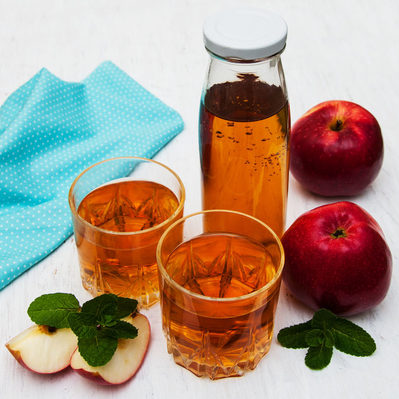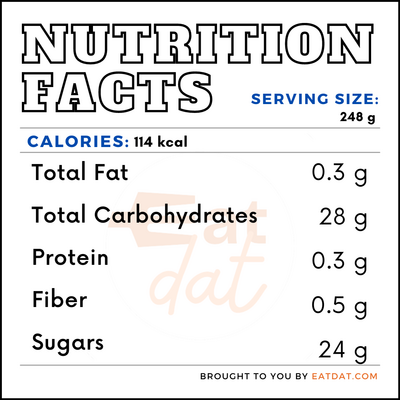
Apple Juice
What is Apple Juice?
Apple juice is the fruit juice extracted from the pressing of an apple. Producing this fruit juice requires complex equipment, therefore it is normally commercially produced. China remains one of the biggest producers of this juice in the world.
- The highest revenue for this beverage is generated in the United States and increases each year.
- The American apple juice market is expected to earn $5,097.4m in 2020.
The top 5 brands in the US, according are:
- Minute Maid
- Tropicana
- Capri Sun
- Mott’s
- Welch’s
- Ocean Spray
Origin
Humans have been eating apples for millennia with many archaeologists pointing to Asia for this fruit’s origins. As society evolved, this fruit was used to make fermented drinks such as apple cider by 55 BC. Cider became wildly popular as its alcoholic content kept it safe from bacteria and its flavor made it enjoyable. During the Age of Exploration, this alcoholic juice was a fundamental part of society at the time.
In 17th century Europe and colonial America, this beverage triumphed as it was easily accessible, affordable, and plentiful. The American Temperance Movement in the late 1800s greatly affected the consumption of cider and began the shift towards alcohol-free drinks. As many states began “going dry” in the Prohibition era, Stephen Martinelli Jr. developed a way to pasteurize unfermented apple juice. The 1920s saw the rise of Martinelli’s apple juice and solidified this beverage’s place in American culture.
Function
This flavorful juice is delicious on its own, but can also help transform food dishes. You can cook meats like gammon or chicken in apple juice to add sweetness, as well as craft sweet sauces and marinades. Bakers also use this juice to add more complexity to cakes.
Nutrition
The apple fruit has a reputation for being very healthy and nutritious. Although much of the fruit’s nutrients are in its skin, so the juice will always have fewer vitamins and minerals. One cup of this can have:

This juice also contains 159% of the daily recommended intake of Vitamin C. While it has vitamins and minerals, the sugar content of this juice means it should be consumed in moderation.
Apple juice production
The commercial production coincides with the yearly harvest time for the apple crop. In the autumn, apples are harvested, cleaned, inspected, then briefly stored in silos before the juice making begins. After that, apples are washed again, cut and grated into small pieces, and receive enzymes that help break down the fruit. The grated apple is then given some time to sit and allow the enzymes to do their work before the juice is extracted.
Fresh apple juice is inspected, filtered, pasteurized and more enzymes are added to hydrate the pectin. Filtration happens again using a filter membrane with microscopic pores to retain any unwanted particles. Once again, it is inspected for color, flavor, and sugar content. A large portion of the fresh juice is stored in a sterile warehouse to keep it fresh for the rest of the year. The remaining juice is packaged or bottled, labeled, and stored until it’s ready to be shipped to stores.
Uses
Everyone from kids to adults can appreciate a fresh glass. For maximum enjoyment, it’s necessary to store this juice properly. Refrigerating this in an airtight container allows you to store it for 7-10 days. Should you need to store it for longer, you can freeze it. Freezing will boost its shelf life significantly, allowing you to keep it for 8-12 months.
Apple juice recipes
This fruity drink can help add great flavor to food in the kitchen. Here are some popular recipes.
- Cake
- Apple-glazed chicken thighs
- Spiced apple cider
- Rice with apple juice and ginger
- Fruit juice pops
FDA Regulation
As there are traces of arsenic in apples, the Food & Drug Administration regulates its production to ensure consumer safety. The FDA’s recommendations include risk assessment, protocol for arsenic-based pesticides, and regular sampling. The arsenic level for apple juice is over 10 μg/kg or 10 ppb of inorganic arsenic.
References
“Apple: Fruit: Food.” Truefoodfact.com, True Food Fact, 18 June 2020, truefoodfact.com/food/apple/.
Rupp, Rebecca. “The Highs and Lows of Hard Apple Cider History.” Nationalgeographic.com, National Geographic, 8 Oct. 2015, www.nationalgeographic.com/culture/food/the-plate/2015/10/08/the-highs-and-lows-of-hard-apple-cider-history/.
M, Nicky. “Fall’s Favorite Drink: The History of Apple Cider.” Arcadiapublishing.org, Arcadia Publishing, www.arcadiapublishing.com/navigation/community/arcadia-and-thp-blog/november-2018/fall%E2%80%99s-favorite-drink-the-history-of-apple-cider.
“Supporting Document for Action Level for Arsenic in Apple Juice.” U.S. Food and Drug Administration, FDA, 1 July 2013, www.fda.gov/food/chemical-metals-natural-toxins-pesticides-guidance-documents-regulations/supporting-document-action-level-arsenic-apple-juice.
